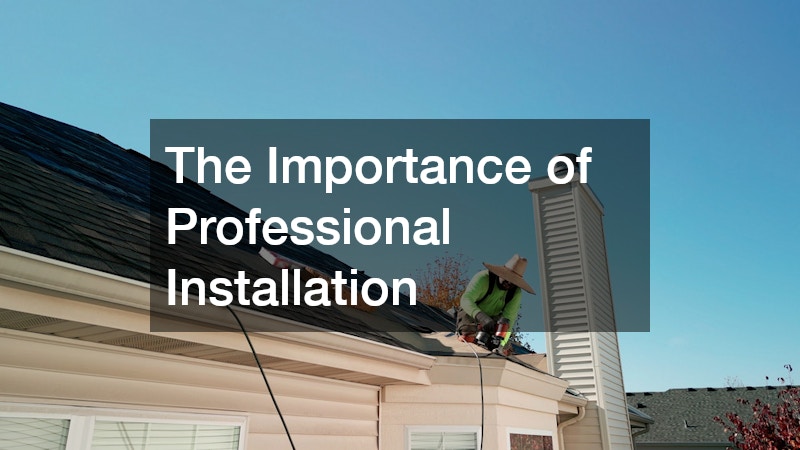When it comes to protecting your home from the elements, the roof is one of the most critical components. Roofing shingles play a vital role in this protection, serving as the first line of defense against rain, wind, snow, and sun. Understanding the different types of shingles available, their benefits, and what to consider during selection can help homeowners make informed decisions. This roofing shingle guide covers everything you need to know about shingles, ensuring your roof remains durable and attractive for years to come.
What Are Roofing Shingles?
Roofing shingles are thin, flat pieces of material installed in overlapping rows on a roof. They protect the underlying roof structure from weather damage and add aesthetic appeal to a home.
Shingles are available in a variety of materials, styles, and colors, allowing homeowners to customize their roof’s appearance and performance.
Common Types of Roofing Shingles
Several types of roofing shingles dominate the residential market. Each type offers distinct advantages depending on climate, roof design, and homeowner preferences.
1. Asphalt Shingles
Asphalt shingles are the most popular roofing material in the United States. They are made from a fiberglass base coated with asphalt and granules for protection against UV rays. Asphalt shingles are known for their ease of installation, durability, and wide range of styles and colors.
They perform well in a variety of climates and can last between 15 to 30 years, depending on quality and maintenance. Their versatility and proven performance make them a go-to choice for many roofers.
2. Wood Shingles and Shakes
Wood shingles are thin, tapered pieces of wood typically made from cedar, pine, or redwood. Shakes are thicker and more textured than shingles, giving a more rustic appearance. Wood roofing offers natural beauty and excellent insulation properties.
While they require more maintenance than asphalt shingles, wood shingles can last up to 30 years with proper care. They are well-suited for homes seeking a traditional or natural aesthetic.
3. Metal Shingles
Metal shingles are made from materials such as steel, aluminum, or copper and are designed to look like traditional shingles or tiles. Metal roofing is known for its durability, resistance to fire, and ability to shed snow and rain quickly.
Metal shingles can last 40 years or more, making them a long-term investment in roof protection. Their lightweight nature also places less stress on a home’s structure.
4. Slate Shingles
Slate shingles are natural stone tiles prized for their longevity and elegance. Slate roofs can last over a century with proper installation and maintenance, making them one of the longest-lasting roofing options available.
These shingles are heavy and require a reinforced roof structure, so professional assessment is essential before installation. Slate offers an unmistakable beauty, often seen on historic or upscale homes.
5. Synthetic Shingles
Synthetic shingles are made from rubber, plastic, or polymer composites designed to mimic the appearance of wood, slate, or tile. They combine durability with lighter weight and often require less maintenance.
Synthetic options continue to improve in quality and have become a popular choice for homeowners seeking a balance between aesthetics and performance.
Factors to Consider When Choosing Roofing Shingles
Choosing the right roofing shingles involves more than just picking a color or style. Several important factors influence the best fit for your home.
Climate and Weather Resistance
Your local climate has a significant impact on shingle performance. For example, areas with heavy rainfall or snow benefit from shingles that offer excellent water resistance and durability under freezing conditions. In regions prone to wildfires, fire-resistant shingles such as metal or specially treated asphalt may be necessary.
Roof Slope and Design
Some shingles are better suited for steep roofs, while others work well on low-slope or flat roofs. The architectural style of your home and roof shape can also influence the best shingle choice.
Longevity and Warranty
Different shingles come with different expected lifespans. Understanding the typical durability of each material helps set realistic expectations and maintenance schedules. Many roofing manufacturers provide warranties that protect against defects and premature wear.
Aesthetics and Curb Appeal
Shingles significantly affect the look of your home. Choose colors and textures that complement your home’s style and neighborhood environment. Many manufacturers offer a wide palette of colors and finishes to suit various tastes.
The Importance of Professional Installation
Proper installation is critical to the performance and longevity of roofing shingles. Experienced roofers ensure that shingles are installed according to manufacturer specifications and local building codes. This expertise helps prevent common problems such as leaks, poor ventilation, and premature shingle failure.
Roofers also conduct thorough inspections before installation to identify potential issues with the roof deck or structure. Working with professionals ensures your investment in new shingles pays off with reliable protection and peace of mind.
Maintaining Your Shingles
Regular maintenance can extend the life of your shingles and keep your roof looking its best. This includes cleaning debris from gutters, inspecting for damage after storms, and removing moss or algae growth. Early detection of minor issues allows for timely repairs, preventing costly damage.
Choosing the right roofing shingles is a key step in protecting your home while enhancing its curb appeal. With various materials and styles available—from asphalt to slate—there is an option for every homeowner’s needs and preferences. Understanding factors like climate, roof design, and maintenance helps in making the best decision.


